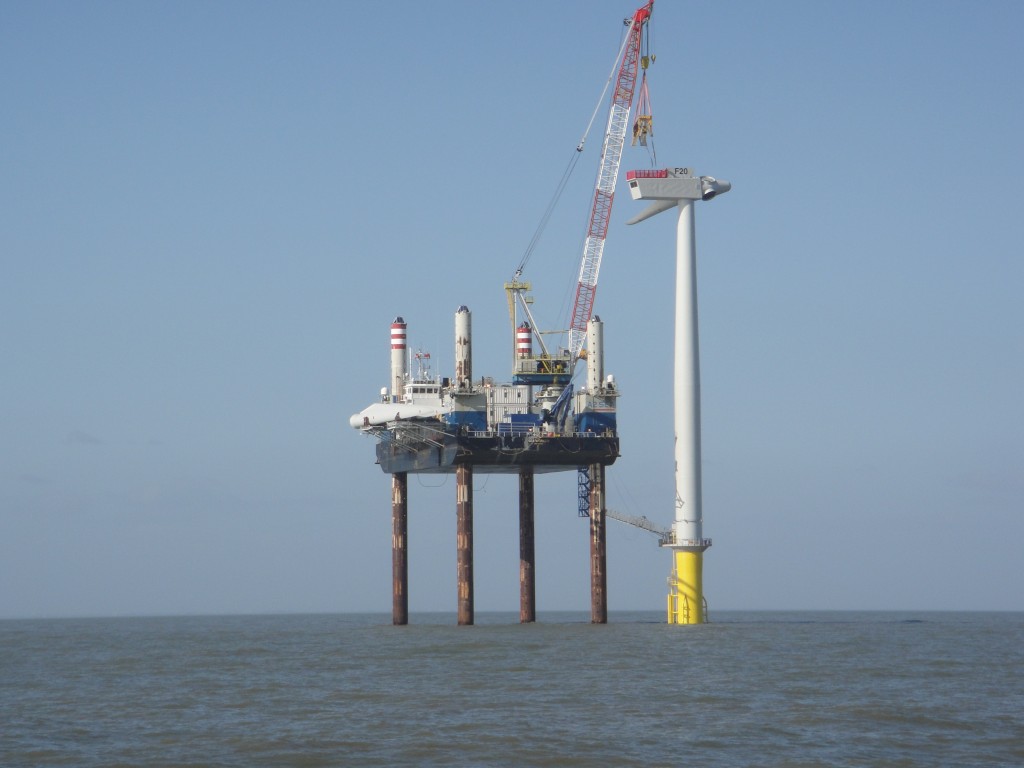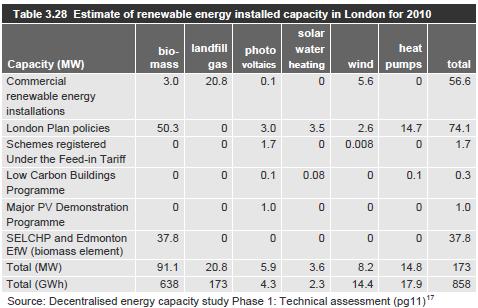Site search:
-
What’s new?
Energy for London Tags
Brent Buildings Camden Carbon Emissions CHP Cities Climate Adaptation Community Heating Community Initiatives Croydon Data DECC Decentralised Energy Distribution ECO Energy Costs Energy Efficiency Enfield FIT Fuel Poverty Funding Green Deal Hackney Haringey Housing Islington Lambeth Library Local Authorities Mayor Newham Ofgem Olympics Photovoltaics Planning RE:FIT RE:NEW Renewable Energy Retrofit Southwark Tower Hamlets Transport Waltham Forest Waste WestminsterEnergy Archives:
- February 2021 (1)
- January 2021 (15)
- December 2020 (15)
- November 2020 (9)
- October 2020 (3)
- August 2020 (5)
- July 2020 (3)
- June 2020 (4)
- April 2020 (10)
- March 2020 (5)
- February 2020 (2)
- January 2020 (3)
- October 2019 (1)
- September 2019 (4)
- August 2019 (2)
- July 2019 (1)
- August 2018 (1)
- November 2016 (8)
- October 2016 (8)
- September 2016 (2)
- August 2016 (8)
- July 2016 (14)
- April 2016 (12)
- March 2016 (16)
- February 2016 (8)
- January 2016 (4)
- December 2015 (1)
- November 2015 (1)
- October 2015 (16)
- September 2015 (3)
- June 2015 (1)
- May 2015 (1)
- April 2015 (1)
- March 2015 (1)
- February 2015 (1)
- January 2015 (1)
- December 2014 (18)
- November 2014 (4)
- August 2014 (8)
- July 2014 (7)
- June 2014 (25)
- May 2014 (8)
- April 2014 (4)
- March 2014 (12)
- February 2014 (7)
- January 2014 (13)
- December 2013 (11)
- November 2013 (15)
- October 2013 (15)
- September 2013 (18)
- August 2013 (5)
- July 2013 (20)
- June 2013 (33)
- May 2013 (8)
- April 2013 (16)
- March 2013 (25)
- February 2013 (14)
- January 2013 (20)
- December 2012 (23)
- November 2012 (23)
- October 2012 (25)
- September 2012 (14)
- July 2012 (12)
- June 2012 (43)
- May 2012 (20)
- April 2012 (8)
- March 2012 (40)
- February 2012 (39)
- January 2012 (40)
- December 2011 (22)
- November 2011 (40)
- October 2011 (33)
- September 2011 (48)
- August 2011 (40)
- July 2011 (58)
- June 2011 (41)
- May 2011 (80)
- April 2011 (38)
- March 2011 (33)
- February 2011 (25)
- January 2011 (24)
- December 2010 (3)
- November 2010 (7)
- October 2010 (6)
- September 2010 (7)
- August 2010 (1)
- July 2010 (2)
- June 2010 (4)
- May 2010 (1)
- March 2010 (3)
- February 2010 (3)
- December 2009 (5)
- November 2009 (2)
- October 2009 (3)
- July 2009 (3)
- June 2009 (1)
- April 2009 (1)
- March 2009 (1)
- February 2009 (1)
- January 2009 (1)
- December 2008 (2)
- October 2008 (1)
- September 2008 (1)
- July 2008 (1)
- March 2008 (2)
- January 2008 (2)
- October 2007 (1)
- September 2007 (3)
- July 2007 (1)
- March 2007 (1)
- February 2007 (3)
- November 2006 (3)
- August 2006 (1)
- February 2006 (1)
- May 2005 (1)
- February 2004 (1)
Monthly Archives: March 2012
Ham Hydro Update
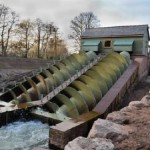 March 2012: A quick update on the community-led Ham Hydro renewable energy project which has been mentioned in some earlier posts – the hydropower scheme involves the installation of “3 Archimedean screw turbines on Teddington Weir to generate approximately 1,900 MWh per annum – enough to power 600 homes”. A formal planning application to Richmond Council was submitted a few months ago, and the full documentation of the scheme’s submission can be viewed on Richmond Council’s planning website here.
March 2012: A quick update on the community-led Ham Hydro renewable energy project which has been mentioned in some earlier posts – the hydropower scheme involves the installation of “3 Archimedean screw turbines on Teddington Weir to generate approximately 1,900 MWh per annum – enough to power 600 homes”. A formal planning application to Richmond Council was submitted a few months ago, and the full documentation of the scheme’s submission can be viewed on Richmond Council’s planning website here.
London Assembly visit London Array
March 2012: The London Array is a largest offshore wind development in the world and is currently being constructed in the Thames Estuary 20km off the north Kent coast at Gravney. Whilst obviously not in London, the presence of such a large renewable project – 1,000MW of electricity generation capacity – in the south will strongly help to decarbonise the local and wider electricity grid, which in time will help reduce the London’s carbon impact.
London Assembly Member Murad Qureshi, also Chair of the Environment Committee at City Hall, has kindly provided for energy for london a short account and photos of a recent visit to the project:
“On a clear blue sky day in the Thames Estuary last week, members of the Environment Committee were able to see phase one of London Array windfarm out in sea. It is approximately 100 km from City Hall with 175 turbines larger then the Ferris Wheel along the South Bank being constructed.
During the afternoon, we saw the turbines being piled into the sea; the arms of the windmills being put up as well as the cable to the shore being land so as the renewable energy can come to shore.
With completion of phase 1 due by December 2012, it was certainly a good day to go and see for ourselves how a renewable energy scheme like London Array can help plug the energy gap in London for 472,500 homes.”
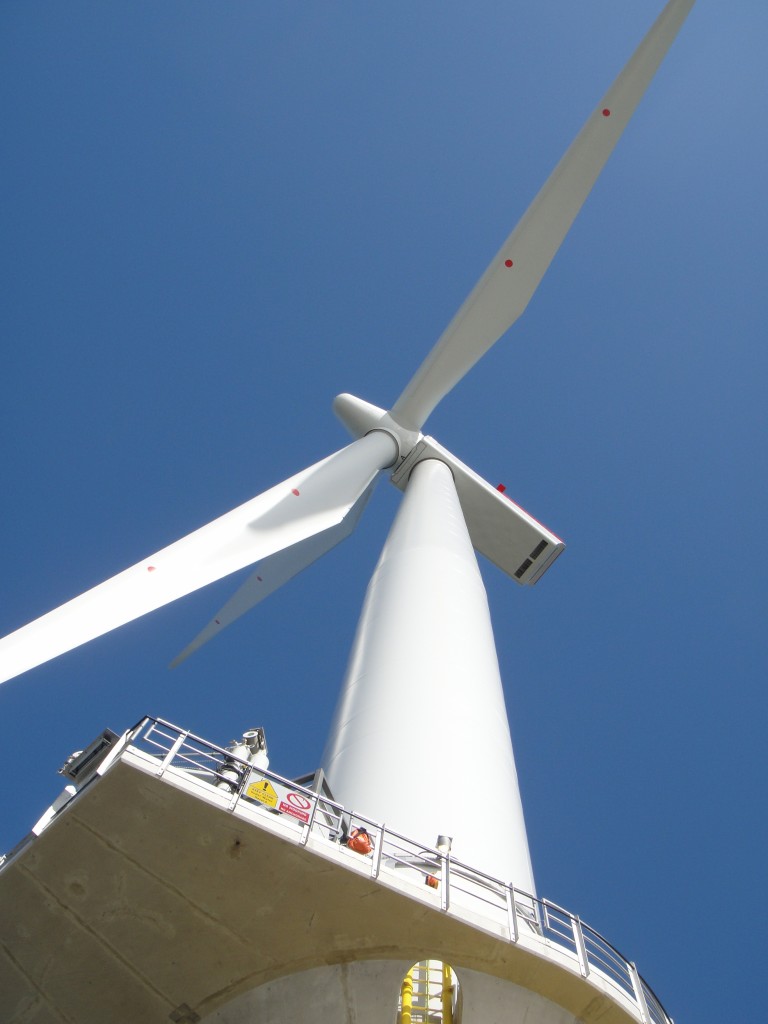 Further information at http://www.londonarray.com/
Further information at http://www.londonarray.com/
Number of households affected by fuel poverty in London is continuing to rise
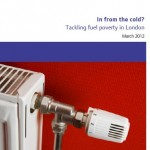 13 March 2012: The London Assembly Health and Public Services Committee have published their conclusions from a lengthy study looking at the incidence and causes of fuel poverty in the capital. The report warns that “despite efforts by the government, the Mayor and a range of targeted initiatives and incentives, the number of households affected by fuel poverty in London is continuing to rise.”
13 March 2012: The London Assembly Health and Public Services Committee have published their conclusions from a lengthy study looking at the incidence and causes of fuel poverty in the capital. The report warns that “despite efforts by the government, the Mayor and a range of targeted initiatives and incentives, the number of households affected by fuel poverty in London is continuing to rise.”
The report ‘In from the cold’ makes a series of recommendations that the Committee state could help improve the situation for the “nearly one in five London households who struggle to heat their homes and pay their energy bills.”
The Committee state that unless action is taken to tackle the problem, long-term energy price rises will continue to push more people into fuel poverty: the Greater London Authority’s (GLA) own projections show a worst case scenario that almost a quarter of households will be in fuel poverty by next year.
View the press announcement of the report here. The report can be viewed here and a new fuel poverty mapping tool using open public data to help delivery organisations identify areas in London most likely to contain households at risk of fuel poverty and offer them targeted support can be downloaded from the London datastore here. Written evidence to the committee can be downloaded here.
‘Unstoppable! The rise and rise of Britain’s green buildings’
18 March 2012: The Independent highlights the increasing focus on sustainability and energy issues in the development of new buildings across the UK. The article lists 10 exemplar buildings, 6 of which are in London. Read the full story here. Further information on each of sites mentioned can be accessed via links below:
Low Carbon London and EDF Energy share initial smart meter findings
March 2012: Recent news release from the Low Carbon London project stating that: “The first 500 smart meters have been installed by EDF Energy in homes across London as part of a pioneering pilot to cut carbon across the capital. …EDF Energy, as a member of the Low Carbon London programme, plans to fit 5,000 smart meters across London and in the Mayor’s low carbon zones, Green Enterprise District and RE:NEW areas by the end of August.” The full news release can be read here. Further information on smart metering initiatives in London can be read here. The trials are taking place in a number of areas around London including Lewisham, Archway, Canning Town, Barking and Peckham.
Energy in the Locality: A day-conference to explore local energy case studies in urban and rural locations
March 2012: The Challenging Lock-in through Urban Energy Systems (CLUES) project looks to “critically assess the development of decentralised energy systems in urban areas in the light of national decarbonisation and urban sustainability goals. Based upon national and international reviews, it examines the range and types of urban energy systems that are and might be installed. It further considers the issues raised by the need for such initiatives to integrate with energy systems at urban level in the UK, regional and national scales in order to deliver energy and carbon reductions to 2050 effectively.”
A conference: Energy in the Locality is being organised as part of the CLUES Project (www.ucl.ac.uk/clues) and aims to provide “an opportunity to hear results from local case studies on different aspects of energy systems, and to reflect on the theoretical and methodological implications of using case studies to understand such systems.” The event will be held on Tuesday, 8 May 2012 from 10:00 to 18:00 at University College London. Further information here.
London’s Buildings need to adapt
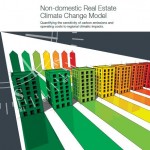 March 2012: Research just released by the Royal Institute of Chartered Surveyors (RICS) highlights the challenges that many buildings will face in the future as a result of a changing climate. Increasing energy use is widely predicted responding to summer temperatures up to two degrees higher by 2030 and up to two degrees cooler in the winter. In particular, the report highlights that it is London ’s schools, offices and hospitals that will incur the largest increase in electricity demand as more power is used to maintain a ‘comfortable environment’. Read the RICS news release here and download the report – the Non-domestic Real Estate Climate Change Model here.
March 2012: Research just released by the Royal Institute of Chartered Surveyors (RICS) highlights the challenges that many buildings will face in the future as a result of a changing climate. Increasing energy use is widely predicted responding to summer temperatures up to two degrees higher by 2030 and up to two degrees cooler in the winter. In particular, the report highlights that it is London ’s schools, offices and hospitals that will incur the largest increase in electricity demand as more power is used to maintain a ‘comfortable environment’. Read the RICS news release here and download the report – the Non-domestic Real Estate Climate Change Model here.
The report states [p10] that this ” research has been made possible only with the release of 64,803 Display Energy Certificate (DEC) records, secured with the help of the Urban Land Institute, which facilitated several Freedom of Information requests to obtain these data.” Unfortunately this data doesn’t appear to have been made publicly available by the Urban Land Institute – however – a simple map of DECs has been created so that individual buildings ratings can be viewed – see www.less-en.org.
Similar data was however also obtained recently by the Centre for Sustainable Energy (CSE) and has been posted online for download at www.cse.org.uk. The spreadsheets contains data on energy use, floorspace, emissions and efficiency ratings for 40,000 buildings of over 1,000m2 in England and Wales that are visited by the public. See an earlier post for additional details.
New definition will push up the incidence of fuel poverty in London
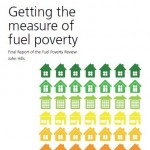 March 2012: The final report from Prof. John Hills has just been published, which provides a series of recommendations to Government in relation to amending the current definition of fuel poverty. The detail behind this study has been covered in some previous posts (see here) but a key output is to recommend that “Government should measure incomes for fuel poverty purposes after housing costs and adjusted for household size and composition.” As a result, the report’s revised indicator (to replace the Government’s current fuel poverty definition) – the LIHC (Low Income High Costs) – “finds that London households account for a greater proportion of fuel poor households than the official indicator.”
March 2012: The final report from Prof. John Hills has just been published, which provides a series of recommendations to Government in relation to amending the current definition of fuel poverty. The detail behind this study has been covered in some previous posts (see here) but a key output is to recommend that “Government should measure incomes for fuel poverty purposes after housing costs and adjusted for household size and composition.” As a result, the report’s revised indicator (to replace the Government’s current fuel poverty definition) – the LIHC (Low Income High Costs) – “finds that London households account for a greater proportion of fuel poor households than the official indicator.”
The report is vitally important to the debate on how we define future policies to tackle fuel poverty, and will have impacts on framing of the forthcoming Energy Company Obligation (ECO) and the Green Deal.
Links to the report and supplementary material follow below:
- Final report of the Fuel Poverty Review by John Hills – Getting the measure of fuel poverty and also the
- Hills Review Final Report Press Notice
- DECC’s press notice
- Getting the measure of fuel poverty: summary and recommendations
- Data used to produce charts for the final report of the Fuel Poverty Review (Excel file)
- Professor Hills’ presentation on the final report: Getting the measure of fuel poverty (Powerpoint – 5MB)
London’s Renewable Energy – Annual Monitoring
March 2012: The Mayor has just published the latest London Plan Annual Monitoring Report (AMR), which monitors a number of key performance indicators (KPIs) set in London’s spatial strategy, the London Plan. This is the first AMR to be published since the new London Plan was published in July 2011.
Two KPIs are of particular interest are:
KPI 20 Reduce carbon dioxide emissions through new development
KPI 21 Increase in energy generated from renewable sources
In terms of KPI 21, London has recently set a revised target for renewable energy which is for 8,550 GWh of energy from renewable sources by 2026 (London’s current total non-transport energy use is approximately 115,000 GWh – see London’s 2011 energy strategy for further information). The target was an output of a significant piece of analysis undertaken in 2011, and published earlier this year – the London Decentralised Energy Capacity Study. The AMR reproduces a table from that study setting out an estimate of renewable energy capacity and output in London in 2010:
The total output for 2010 of 858 GWh highlights that London has considerable way to go – a ten-fold increase – to achieve the 2026 target. DECC also produce regional renewable energy statistics – but only report on renewable electricity output (which is hard to compare to that reported above, as the largest GWh component in the table – for biomass – has added the heat and power output components together).
Additional monitoring of the London Plan’s carbon and energy policies are reported here.
IEA: Now is the time for global deployment of smart communities
March 2012: Even the International Energy Agency (IEA) is now highlighting the potential of localised, decentralised energy systems, with the Deputy Executive Director recently stating that “Smart communities – cities, towns, neighbourhoods and villages that reduce their energy demand and generate their own power from renewable sources – should play an increasingly important role across the world…A smart community is a very low energy demand community that integrates several energy supply systems – such as wind, solar and other renewable energy sources. Smart communities effectively reduce energy demand by implementing energy efficiency and energy sufficiency measures. Primary energy demand for a building in a smart community is around a third of the energy demand in the average US household and almost a half of the energy demand in the average household in the European Union.”
Hounslow Warm Homes Healthy People Conference
March 2012: The Hounslow Warm Homes, Healthy People conference will look to:
- Find out about the causes and effects of cold homes and poor quality housing. Health issues related to cold homes cost the NHS in London £118m each year, and nearly £900m nationwide.
- Learn more about services available across the Borough to help and support residents to stay warm and well at home
- Share views and ideas on how services in Hounslow should best be coordinated to ensure the best outcomes for residents
Hounslow Council is particularly keen to consult with stakeholders at this early stage as it develops its thinking about how the Council, the health sector, voluntary organisations and community groups can best work together to help people keep warm and healthy at home.
The event will take place on Friday 23rd March, from 9.30am – 3.30pm, at Hounslow Civic Centre. Register now for your free place here.
‘Climate Kids Grill Minister’
March 2012: No particular London issue related to this DECC press release – apart from this nice picture!
Posted in News
Leave a comment



